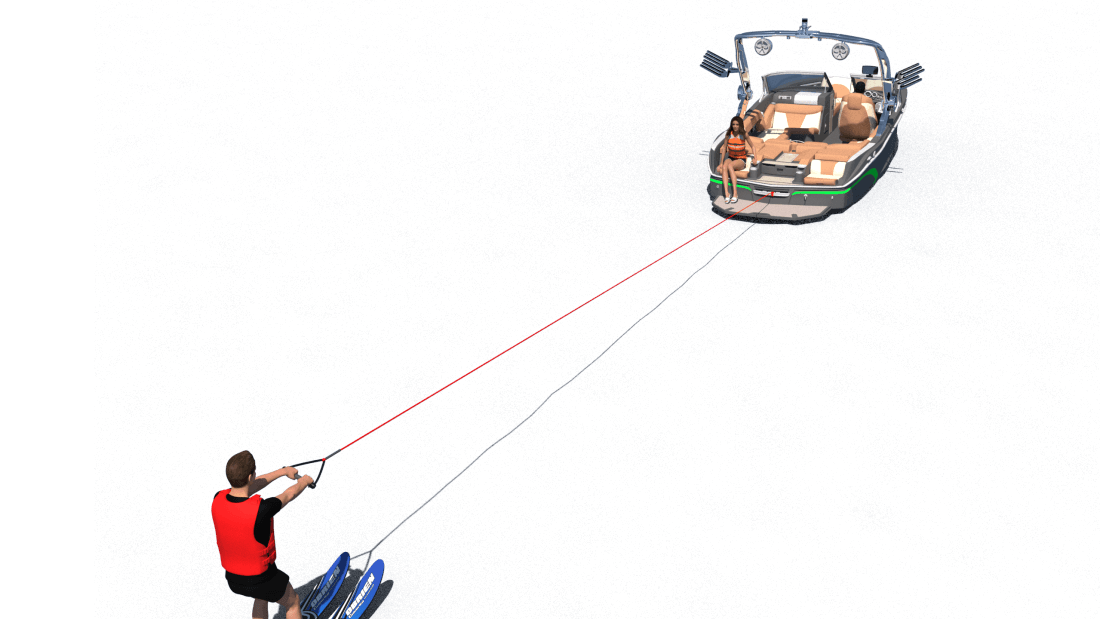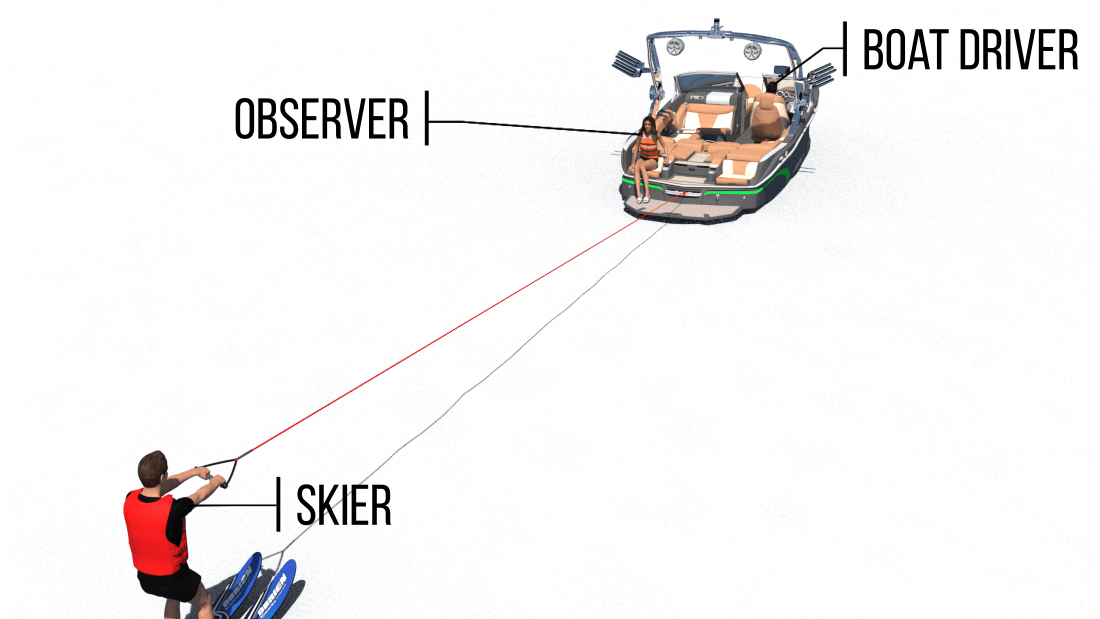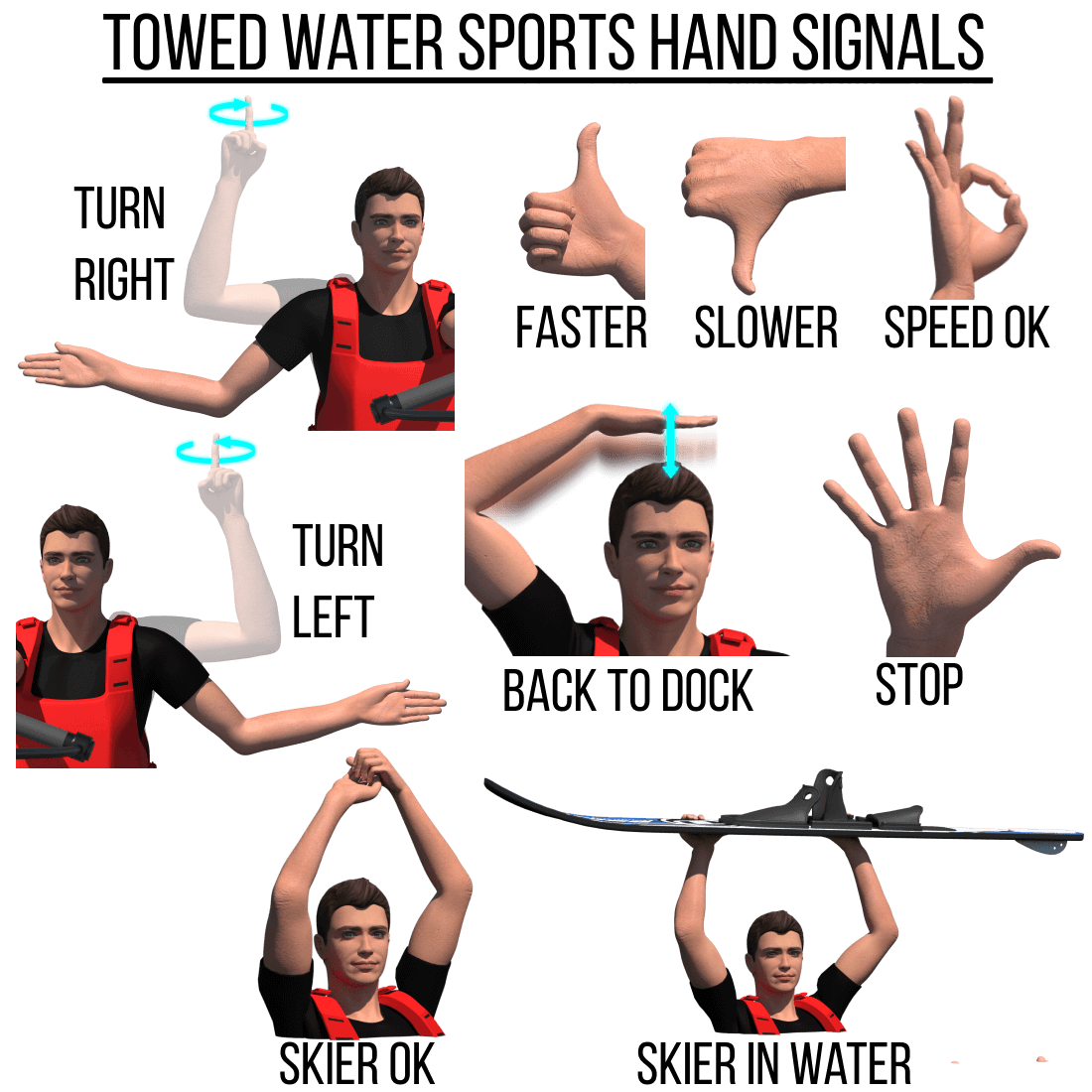Towing Sports Safely: Rules for Tubing, Waterskiing, and Wakeboarding

Few activities capture the thrill of summer like being towed behind a boat — the spray, the speed, the laughter echoing across the lake. Tubing, waterskiing, and wakeboarding are exciting family sports, but they also come with serious responsibilities. A fun day can quickly turn dangerous if operators, riders, or spotters ignore safety basics.
This guide covers everything you need to know to tow participants safely, from equipment checks to navigation rules and hand signals. Whether you’re a first-time tower or a seasoned driver, following these principles ensures everyone enjoys the ride — and returns safely to shore.
1. The Foundation: Operator Responsibility
When towing anyone, the boat operator becomes the captain of two vessels — the boat and the person (or people) being towed. You’re legally and morally responsible for their safety.
Key duties include:
-
Maintaining constant awareness of the rider and surroundings.
-
Obeying speed limits and right-of-way rules.
-
Avoiding high-traffic areas and restricted zones.
-
Never allowing towing when visibility or weather conditions are poor.
-
Ensuring the spotter and equipment meet legal requirements.
In most jurisdictions (Transport Canada and U.S. Coast Guard), it’s illegal to tow a person behind a boat without an observer on board in addition to the driver. The observer (or “spotter”) must be old enough and strong enough to communicate effectively with the driver.
2. Pre-Departure Equipment and Safety Check
Before anyone gets wet, perform a thorough inspection:
Tow Rope and Tow Point
-
Use a marine-grade tow rope designed for the sport:
-
Tubing: 50–65 feet, 1,500–2,000 lb tensile strength.
-
Waterskiing: 75 feet, low stretch.
-
Wakeboarding: 65–75 feet, minimal stretch for tricks.
-
-
Inspect for frays, knots, or sun damage. Replace if worn.
-
Attach securely to an approved tow eye, pylon, or tower — never to handrails or cleats.
Life Jackets (PFDs)
Every participant must wear a Coast-Guard- or Transport-Canada-approved PFD rated for towed sports. These jackets are snug-fitting, with extra straps to prevent ride-up during impact. Never use standard boating PFDs for high-speed towing; they may tear or come loose.
Other Essentials
-
Rear-view mirror (legal requirement in some areas).
-
Safety flag to raise when a skier or boarder is down.
-
First-aid kit, throwable flotation, and a knife to cut tangled lines.
-
Communication system — hand signals, whistle, or waterproof headset.


3. The Role of the Observer (Spotter)
The observer’s job is crucial. They act as the eyes and ears of the driver, watching the person being towed while the operator focuses on safe navigation.
Responsibilities:
-
Keep continuous visual contact with the rider.
-
Communicate signals to the driver instantly.
-
Raise the orange skier-down flag when the rider falls.
-
Confirm that the rider is ready before each start.
Without a competent observer, the operator cannot legally or safely tow anyone.
4. Rider Preparation and Rules
Before hitting the water, brief everyone on safety expectations.
Clothing and Gear
-
Wear a properly fitted life jacket.
-
Secure long hair, remove jewelry, and wear water shoes if desired.
-
Avoid loose ropes or handles while waiting in the water.
-
For wakeboarders, confirm bindings fit tightly and fins are secure.
Starting Procedures
-
Wait until the driver idles into position and the rope is tight.
-
Signal “ready” (thumbs-up) before the boat accelerates.
-
Keep knees bent and arms straight as you rise from the water.
-
Once up, maintain distance from the boat’s wake until stable.
General Rules
-
One rider at a time unless your equipment is rated for multiple.
-
Never weave between boats, docks, or swimmers.
-
Stay clear of shoreline, buoys, and anchored vessels.
-
When you fall, let go of the handle immediately to avoid being dragged.
5. The Importance of Hand Signals
Hand signals are the universal language between rider, observer, and driver. Every team should review them before departure:

6. Choosing a Safe Location
Towing sports require open water and distance from hazards.
Ideal Conditions
-
Deep, obstacle-free area (minimum 5–8 feet for tubing, 8–10 feet for skiing or wakeboarding).
-
Calm weather, light wind, and good visibility.
-
No-wake zones or designated swimming areas well avoided.
Avoid
-
Shallow coves, narrow channels, or near anchored boats.
-
Busy traffic areas, docks, or crowded beaches.
-
Restricted zones marked by yellow or orange buoys.
Operate counter-clockwise around the lake when others are skiing — this keeps skiers inside the turn and closer to shore for safety.
7. Safe Boat Operation and Speed Control
The best tow drivers are smooth and predictable. Quick throttle changes can throw riders off balance or injure them.
Recommended Speeds
-
Tubing: 15–20 mph (24–32 km/h) for adults; slower for children.
-
Waterskiing: 25–35 mph (40–56 km/h), depending on skier’s skill.
-
Wakeboarding: 18–24 mph (29–39 km/h).
Always adjust for rider experience and water conditions. Rough water can double the impact force when riders hit waves.
Turning and Circling
-
Make wide, even turns to maintain consistent tension on the rope.
-
After a fall, circle slowly back downwind toward the rider.
-
Approach with the engine in neutral before picking them up — never reverse near a person in the water.
8. When the Rider Falls
Falls are part of the sport; safety comes from handling them correctly.
-
Observer raises the flag immediately.
-
Driver throttles down and turns back slowly.
-
Keep the rider in sight at all times.
-
Approach from downwind or down-current to maintain control.
-
Shift to neutral before the rider touches the boat or rope.
Remind riders to keep the handle in front of them and stay calm. Most injuries happen after the fall — from propellers or secondary collisions.
9. Avoiding Common Hazards
Rope Entanglement
Never wrap rope around hands, arms, or body parts. When coiling it, keep it clear of propellers and passengers.
Propeller Injuries
Turn off the engine or ensure neutral gear before anyone enters or exits the water. Use propeller guards where possible.
Carbon Monoxide Poisoning
Avoid towing riders or swimming directly behind idling boats. Carbon monoxide from exhaust collects near the stern and can knock someone unconscious.
Overcrowding and Distraction
Only carry passengers who can sit securely. Loud music, phones, or alcohol impair attention and reaction time.
10. Environmental and Courtesy Guidelines
Responsible towing protects the environment and keeps lakes enjoyable for everyone.
-
Stay at least 100–200 feet from shorelines, docks, or swimmers.
-
Minimize wake near small boats, kayaks, and wildlife zones.
-
Avoid repetitive runs that erode banks or disturb nesting birds.
-
Reduce engine noise early in the morning or late evening.
Courtesy and respect for others on the water are part of safe boating.
11. Legal and Regulatory Requirements
Regulations vary by province and state, but general requirements include:
-
The vessel must have one seat per passenger plus the rider.
-
Towing after sunset or before sunrise is prohibited.
-
The observer must be on board and attentive at all times.
-
The boat must carry required safety equipment (life jackets, fire extinguisher, sound signal, etc.).
-
Operators must hold a boating license or Pleasure Craft Operator Card (PCOC) if required by law.
Violating towing laws can result in fines or suspension of boating privileges.
12. Special Considerations for Tubing
Tubing feels effortless but carries unique risks because riders have little control.
-
Tow one or two tubes maximum — beyond that, steering becomes unpredictable.
-
Keep a wide arc on turns; inner tubes slow down while outer tubes accelerate sharply.
-
Avoid whip turns or jumps that could flip riders at high speeds.
-
Always confirm tubes are rated for towing and have reinforced tow points.
Children should ride in the center of the wake at slow speeds until experienced.
13. Special Considerations for Waterskiing
Waterskiing requires balance, control, and consistent speed.
-
Use skier-specific ropes and handles with proper grip and stretch.
-
Accelerate smoothly to pull the skier up without jerking.
-
When the skier drops a ski or finishes, signal and slow down gradually.
-
Approach a fallen skier on the driver’s side for best visibility.
Never cut across another boat’s wake or ski close to others. Experienced skiers can perform tricks, but beginners should stay in open, calm areas.
14. Special Considerations for Wakeboarding
Wakeboarding adds jumps and aerial tricks, increasing risk if done carelessly.
-
Maintain a steady speed and smooth wake.
-
Avoid sharp turns or abrupt accelerations.
-
Riders should spot landings and release the handle if off-balance.
-
Use wakeboard towers or pylons to raise tow height and reduce drag.
-
Never attempt stunts in crowded waters or near docks.
Remember: professional riders train for years. On public waters, prioritize safety over performance.
15. Ending the Session Safely
When finished:
-
Bring the boat to idle and signal the rider to release the handle.
-
Approach slowly, keeping the rider in sight.
-
Shut off the engine before they climb aboard.
-
Coil and stow ropes neatly away from propellers.
-
Lower flags and secure all equipment.
Conduct a quick debrief — ask if anyone was injured, if equipment needs repair, or if anything could improve next time.
16. Conclusion: Fun, Freedom, and Responsibility
Towed sports deliver some of the best memories on the water — the laughter, the challenge, the shared excitement. But those moments of joy rest on one foundation: safety.
Every rope you inspect, every flag you raise, every slow, careful turn you make protects someone’s child, friend, or family member.
Follow these towing rules faithfully:
-
Use the right gear.
-
Communicate clearly.
-
Stay alert and sober.
-
Respect the environment and other boaters.
When you combine fun with responsibility, you create the perfect formula for safe summer adventures — and ensure that the waves carry only smiles home at the end of the day.